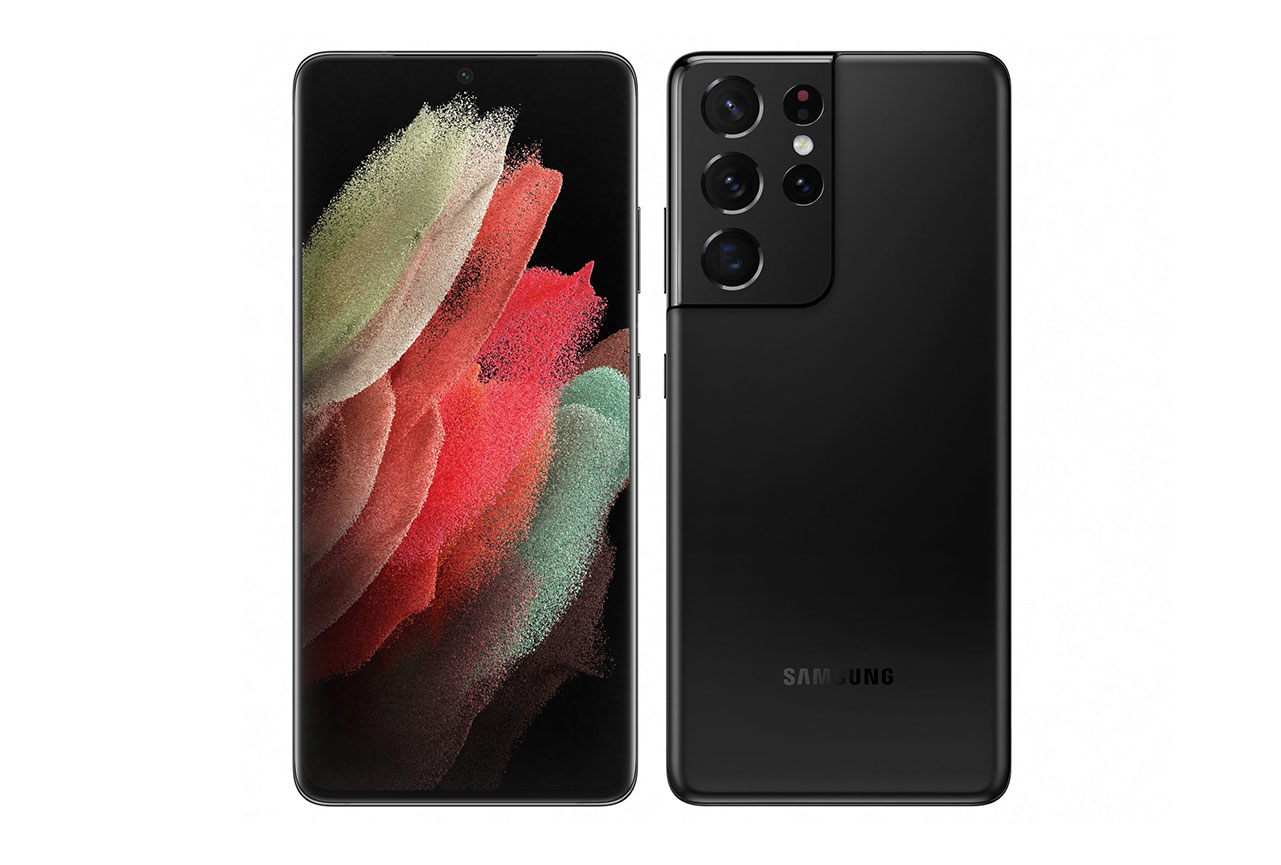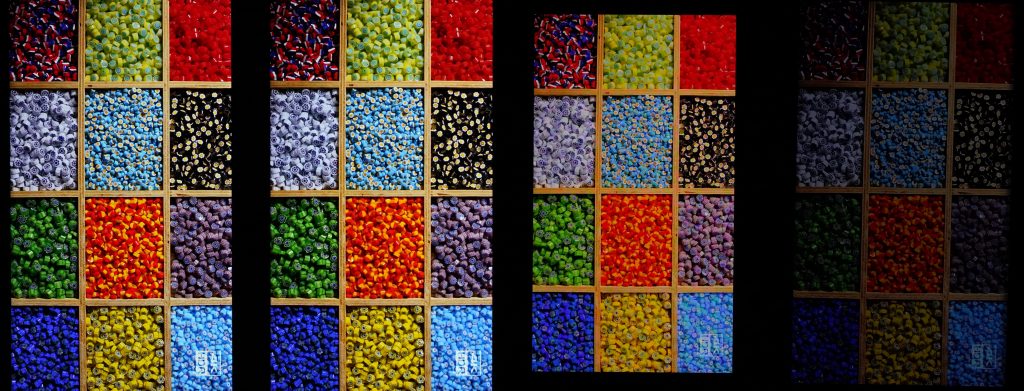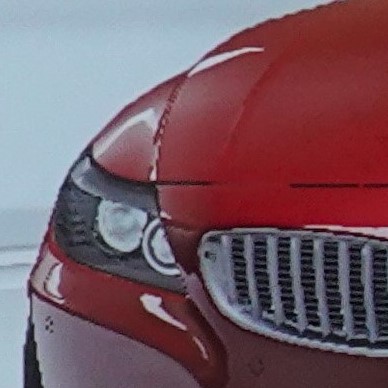The Samsung Galaxy S21 Ultra 5G (Snapdragon) has been selling in the U.S. and China (and a few other places) since January 2021 and is the near-identical twin of the S21 Ultra (Exynos) version sold in other parts of the world. Both share the same high-end specs, including the same quad-camera setup and stylus support; the only difference in hardware between the two versions is in the processors they use: the U.S./China-oriented model relies on the Qualcomm Snapdragon 888 chipset, while Samsung uses its own Exynos 2100 in the model sold elsewhere. Because of their close similarities in performance, this review will mostly focus on the very few differences between the two versions in our comprehensive Display protocol testing. (For more complete performance results, please refer to our Samsung Galaxy S21 Ultra 5G (Exynos) review.)
Key display specifications:
- AMOLED 2x screen with Corning Gorilla Glass Victus
- Size: 6.8 inches (89.8% screen-to-body ratio)
- Dimensions: 165.1 x 75.6 x 8.9 mm (6.5 x 2.98 x 0.35 inches)
- Resolution: 1440 x 3200 pixels
- Aspect ratio: 20:9, ~515 ppi
- Refresh rate: 120 Hz
About DXOMARK Display tests: For scoring and analysis in our smartphone and other display reviews, DXOMARK engineers perform a variety of objective and perceptual tests under controlled lab and real-life conditions. This article highlights the most important results of our testing. Note that we evaluate display attributes using only the device’s built-in display hardware and its still image (gallery) and video apps at their default settings. (For in-depth information about how we evaluate smartphone and other displays, check out our articles, “How DXOMARK tests display quality” and “A closer look at DXOMARK Display testing.”)
Test summary
Scoring
Sub-scores and attributes included in the calculations of the global score.
 Samsung Galaxy S21 Ultra 5G (Snapdragon)
Samsung Galaxy S21 Ultra 5G (Snapdragon)


 71st
71st
 50th
50th
Pros
- Well-balanced brightness and accurate colors lead to a satisfying experience when watching HD10 videos.
- Well-adapted luminance levels and high maximum brightness mean very good readability in most conditions.
- The device has great smoothness when web browsing and in the gallery app.
- The device manages frame drops well when watching videos.
Cons
- Color faithfulness deteriorates under very bright outdoor conditions, particularly under sunlight.
- The device is inaccurate when zooming in the gallery app and does not correctly detect touches along its edges when playing video games.
- Still image colors are generally too saturated.
- Slightly dazzling in dark ambient conditions, and the BLF does not filter out enough blue light under any lighting condition.
With almost entirely identical scores across all attributes, the Samsung Galaxy S21 Ultra 5G (Snapdragon) joins its Exynos twin in joint first place (as of this writing) in our DXOMARK Display rankings.

Readability
Samsung Galaxy S21 Ultra 5G (Snapdragon)
74
76
Achieving an excellent score of 74, the Samsung Galaxy S21 Ultra 5G (Snapdragon) is currently in a three-way tie for first with Exynos version and the TCL 10 Pro. It has good readability at its default settings; however, the both S21 Ultra devices are somewhat dazzling in low-light conditions, which may make viewing a bit uncomfortable for some users.
Indoors, the device’s brightness ensures that most content is easily readable, but darker tones lack detail. Despite its high luminance outdoors, the S21 Ultra 5G (Snapdragon) lacks readability, especially for darker content. The Snapdragon-powered smartphone adapts smoothly to light transitions but the rendering changes abruptly when moving from sunlight to shade. The Samsung Galaxy S21 Ultra 5G (Snapdragon) loses brightness when viewed in angle. As you can see in the array below, the Exynos version (second from left) is noticeably brighter:

The objective measurements in the graph above confirm the perceptual results between the two Samsung devices.

Color
Samsung Galaxy S21 Ultra 5G (Snapdragon)
82
92
The Samsung Galaxy S21 Ultra 5G (Snapdragon) shows oversaturated colors along with some slight pink casts on most contents. In bright sunlight, colors are strongly oversaturated and color nuances disappear, leading to inaccurate rendering:


Video
Samsung Galaxy S21 Ultra 5G (Snapdragon)
90
91
The Samsung Galaxy S21 Ultra 5G (Snapdragon) has the same score as the Exynos version. Both devices offer excellent levels of brightness and color fidelity when watching HDR10 content. As for differences between the two models, as shown in the illustrative photo array below, the Exynos version’s rendering is just slightly more vivid and closer to the reference image rendering than the Snapdragon’s.


Motion
Samsung Galaxy S21 Ultra 5G (Snapdragon)
77
87
At 77 points apiece, both versions of the S21 Ultra 5G trail behind the class-leading Huawei P40 Pro at 87, with both showing some frame duplications and regular stuttering while playing video games, along with some hesitation in playback reactivity when rewinding or fast-forwarding videos.

Touch
Samsung Galaxy S21 Ultra 5G (Snapdragon)
55
85
The Samsung devices’ lackluster results for motion are far overshadowed by their disappointing performance for touch, as both showed inaccuracies when using with fingers (though good with the S Pen stylus). Further, although they were very smooth in the gallery app and when web browsing, there was a perceptible lack of fluidity when gaming.

Artifacts
Samsung Galaxy S21 Ultra 5G (Snapdragon)
79
86
Artifacts is the only category in which the two S21 Ultra 5G models earned different scores, with the Snapdragon version bettering the Exynos by one point.
Both devices have problems with ghost touches in landscape mode, and noticeable flicker in dark ambient viewing conditions.
That all said, the Snapdragon version of the Samsung Galaxy S21 Ultra 5G handles aliasing somewhat better than its Exynos twin, although neither device’s rendering would win it any plaudits from the gaming community:


Conclusion
The Snapdragon and Exynos versions of the Samsung Galaxy S21 Ultra 5G are very similar, though the Snapdragon shows slightly better performance in handling artifacts. Overall, both show the same strengths and weaknesses: because of touch performance and aliasing, for example, neither model would be the first choice for serious gamers, but otherwise these latest Samsung twins come with a great display, especially for watching videos. (For more complete performance results, see our Samsung Galaxy S21 Ultra 5G (Exynos) review.)



DXOMARK encourages its readers to share comments on the articles. To read or post comments, Disqus cookies are required. Change your Cookies Preferences and read more about our Comment Policy.